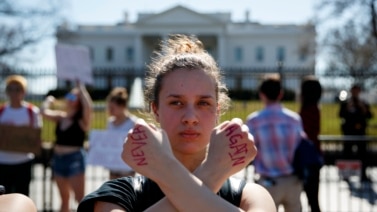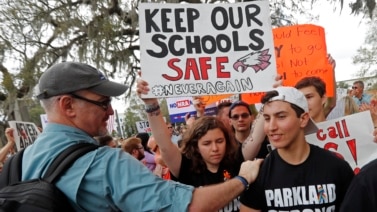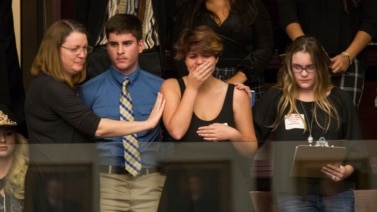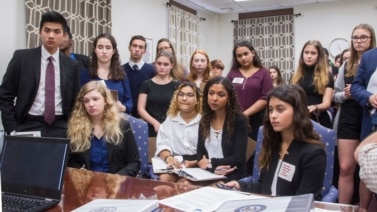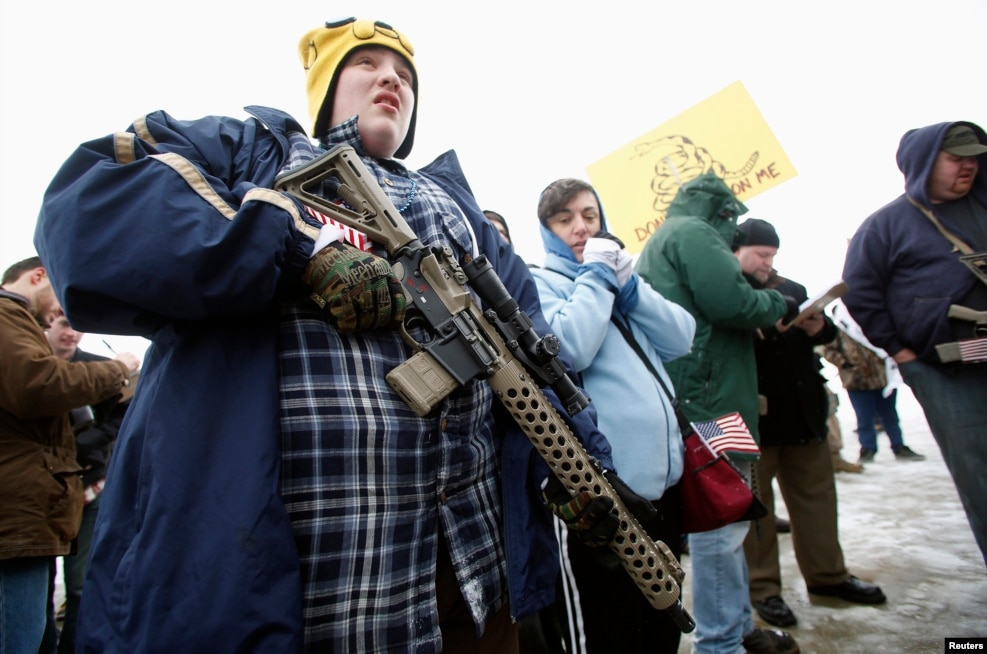
The Second Amendment of the U.S. Constitution says: “A well regulated Militia, being necessary to the security of a free State, the right of the people to keep and bear Arms, shall not be infringed.”
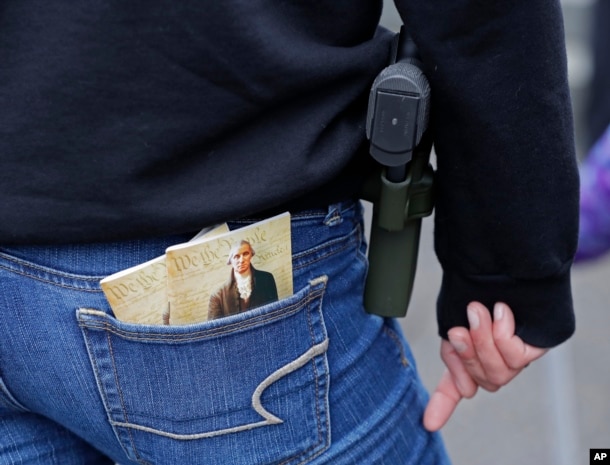
What these words mean, exactly, is disputed in the United States. Even the Supreme Court, whose job it is to interpret the Constitution, has disagreed. The issue is whether the federal government can place restrictions on who owns guns and how people use them.
In the Court’s 200-plus-year history, it has ruled on cases related to the Second Amendment several times - and its answer to what the Amendment means has recently changed.
U.S. v. Cruikshank, 1876
The Second Amendment was adopted in 1791, along with the rest of the Bill of Rights. About 80 years later, an event prompted the Supreme Court to clarify it. A group of white supremacists in Louisiana attacked and killed more than 100 African American men.
Later, the white supremacists were charged -- not with murder, but with violating the victims’ constitutional rights.
In time, the Supreme Court heard the case. The lawyers’ arguments covered many issues. But in deciding the case, the justices said something important about the Second Amendment. They said the Constitution did not guarantee every person the right to have a gun.
Instead, the justices agreed, state laws could regulate gun ownership, as long as citizens could form a militia if they needed to.
The white supremacists won their case and were not punished.
Presser v. Illinois, 1886; Miller v. Texas, 1894; U.S. v. Miller, 1939
In the next decades, the Supreme Court affirmed its earlier decision. It said the state of Illinois had the right to prevent ordinary citizens from carrying weapons in a parade.
In another case, a man in Texas argued that his state law could not prevent him from carrying a hidden weapon. The Supreme Court said it could.
And in the early 20th century, two men said the Second Amendment protected their right to bring an unregistered, sawed-off shotgun from one state to another. The justices disagreed. They said the “obvious purpose” of the Second Amendment was to support a state’s volunteer army, its militia. A sawed-off shotgun did not have a “reasonable relationship” to the militia, the justices said. And, as such, policies restricting the weapon were just fine.
District of Columbia v. Heller, 2008
More than 70 years passed. Then, in 2008, the Supreme Court ruled again on a gun-related case. And this time, its answer was very different.
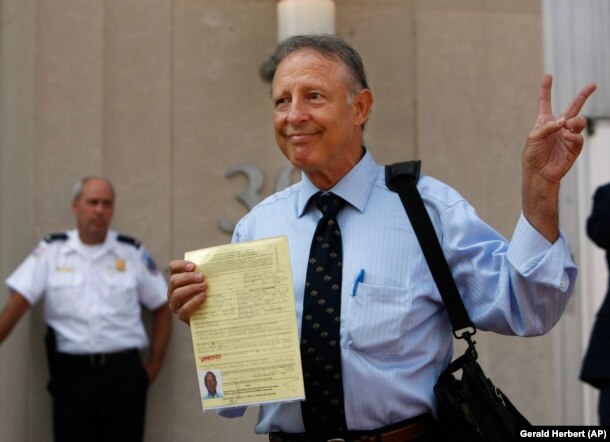
The case involved a man named Dick Heller. He lived in Washington, D.C., and was permitted to carry a gun at his job as a security guard. At the time, Washington, D.C., was considered very dangerous. Heller wanted to keep a handgun in his home for self-defense. District lawmakers said no.
They pointed to a 1975 district law that banned most people from having handguns. Lawmakers said the goal of the law was to prevent an increase in gun violence. But Heller argued that the district’s ban on handguns violated his Second Amendment rights.
This time, the Supreme Court agreed. Five out of nine justices said the Second Amendment said the Constitution did guarantee most people the right to have a gun, at least for protection in their homes. Guns did not have to be connected to a militia, after all.
McDonald v. City of Chicago, 2010
Two years later, the Supreme Court ruled on a similar case. This time, a man argued that the city of Chicago could not prevent him from having a handgun. Five out of nine justices agreed with him, too.
So what changed?
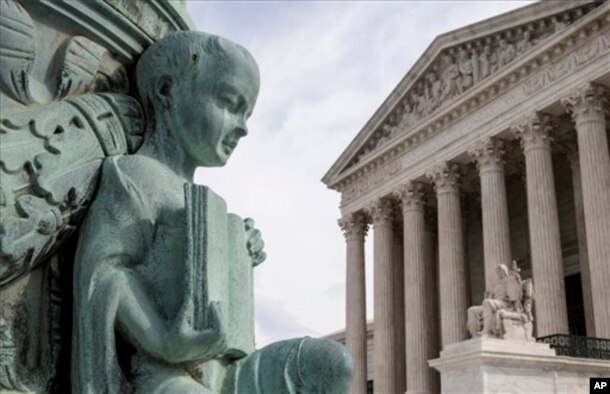
The recent Supreme Court decisions show a major change in thinking about the Second Amendment. Gun ownership in the U.S. is now considered the individual right of each person, rather than the collective right of militias.
And the Second Amendment now protects gun owners from many state and local laws that restrict gun ownership and use.
Michael Trachtman is a lawyer and the author of a book about the Supreme Court. He points out that, over time, the Supreme Court has reversed decisions on a number of issues, including same-sex marriage and abortion.
Trachtman says, “The history of the law is the evolution of the law.”
He notes that over time, decisions the public accepted in the 1800s may not fit with ideas in the 20th or 21st century.
“Or there may simply be disagreements between justices today and justices five or 10 years ago,” Trachtman says.
In the case of the Second Amendment, gun rights activists have also played an important part. Scholars Eric Ruben and Darrell Miller wrote in 2016 about the issue. They say that in the 1970s, researchers looked for historical sources supporting a different understanding of the Second Amendment. At the time, their ideas were not widely accepted. But eventually some other scholars adopted the view. And gun rights activists began challenging cases related to the Second Amendment in court.
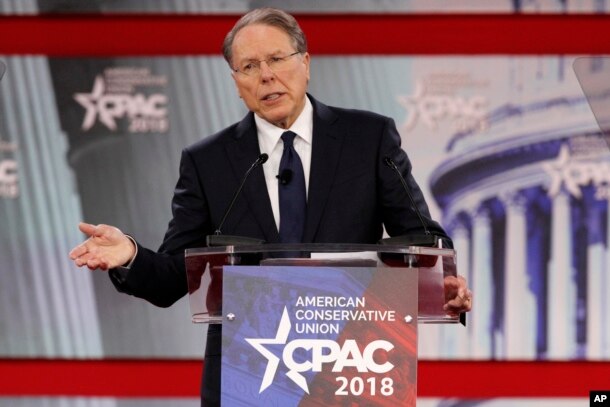
In the early 2000s, activists focused some of their political efforts on the Heller case. The National Rifle Association - or NRA - especially organized supporters to explain to the Supreme Court justices why they should defend a constitutional right to gun ownership.
The NRA’s efforts were combined with activism from libertarians - people who want to severely limit the role of government.
Their arguments, along with some of the justices’ own understanding of the Constitution, helped change more than 130 years of legal history.
I’m Kelly Jean Kelly.
And I’m Bryan Lynn.
Kelly Jean Kelly wrote this story for VOA Learning English. Hai Do was the editor.
We want to hear from you. Write to us in the Comments Section or on our Facebook page.
Words in This Story
interpret - v. to explain or tell the meaning of
prompt - v. to cause someone to do something
clarify - v. to make something clearer
white supremacist - n. a person who believes that the white race is better than all other races and should have control over all other races
affirm - v. to decide that the judgment of another court is correct
sawed-off - adj. with a short barrel
obvious - adj. easy for the mind to understand or recognize
evolution - n. a process of slow change and development
